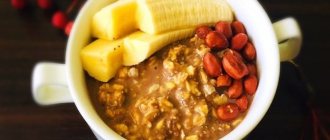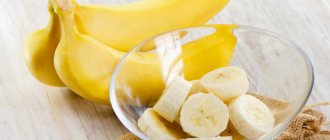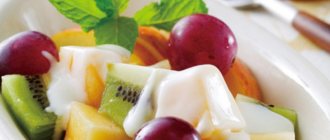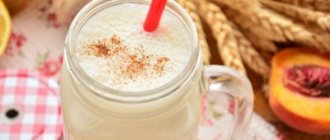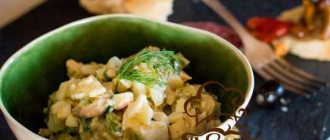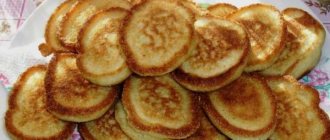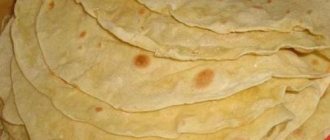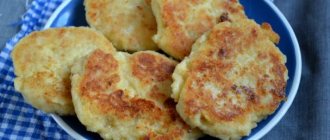Cottage cheese and yogurt are the most delicious foods that everyone has known since childhood, but not many people know that with the help of these products you can easily lose weight. There are many diets developed based on these products. The curd and yogurt diet is especially popular, with the help of which you can get rid of three to ten kilograms of excess weight in a short period. Thanks to the proteins and large amounts of calcium contained in fermented milk products, weight loss will be very successful and will not harm your health. And these fermented milk products also satisfy your hunger well, so you won’t think about food all the time. The duration of diets based on fermented milk products ranges from six days to two weeks.
The benefits of fermented milk products
Since ancient times, people have known fermented milk products for their beneficial properties, but only in 1908 did the scientist Mechnikov conduct research on the benefits of fermented milk products. He studied the life expectancy of people from 36 countries and found that the longest-livers were the inhabitants of Bulgaria, as they ate a huge amount of fermented milk products. Thanks to this discovery, nutritionists, many years later, developed a diet based on yogurt and cottage cheese.
Benefits and calorie content of yogurt
Nowadays it has especially become very popular all over the world. It is produced in a thick form - eaten from a spoon and in a more liquid, drinking form. In addition to the fact that it is very tasty, it is very healthy, it contains bifidobacteria, which have a beneficial effect on the intestinal microflora, and also contributes to the normal functioning of digestion.
Many nutritionists recommend yogurt for weight loss. Also, it is not only consumed during a diet, in cooking it is used in the preparation of various sauces, dressings, seasoned with vegetable salads, and added to baked goods. Yogurt can be consumed by people even with lactose intolerance, and nowadays you can find it without lactose content; in addition, it differs in its calorie content:
| Fat percentage of yogurt | Calorie content per 100 grams |
| 1.5% natural no added sugar | 51 |
| 1.5% sweet | 70 |
| 3.2% natural no added sugar | 66 |
| 3.2% sweet | 85 |
| Rastishka (drinkable) | 82 |
Benefits and calorie content of cottage cheese
Cottage cheese is a dietary product; many doctors recommend it to patients with diseases of the liver, intestines, stomach, and kidneys. It contains a large number of essential substances that affect bones and teeth and make them stronger. It is absorbed very well and quickly, and the amino acids that are found in it improve the functioning of the digestive system; the iron content in it normalizes the level of hemoglobin in the blood. If you decide to do a weight loss course using cottage cheese, then you need to know what calorie content each type of cottage cheese has, for this you can use the table:
| Fat content of cottage cheese | Calorie content 100 grams |
| 9 % | 159 |
| 18 % | 232 |
| 0% | from 50 to 70 |
| 1% | 79 |
| 0,1 % | 76 |
| 0,2 % | 81 |
| 0,3 % | 90 |
| 0.6% (low fat) | 88 |
| 2 % | 103 |
| 2% with berries | 138 |
| 1.8% fat | 101 |
| 4 % | 104 |
| 5% | 121 |
| 5% with berries | 164 |
Recipe: Cottage cheese with yogurt. Calorie, chemical composition and nutritional value.
Nutritional value and chemical composition of “Cottage cheese with yogurt”.
The table shows the nutritional content (calories, proteins, fats, carbohydrates, vitamins and minerals) per 100 grams of edible portion.
| Nutrient | Quantity | Norm** | % of the norm in 100 g | % of the norm in 100 kcal | 100% normal |
| Calorie content | 121 kcal | 1684 kcal | 7.2% | 6% | 1392 g |
| Squirrels | 16.3 g | 76 g | 21.4% | 17.7% | 466 g |
| Fats | 4.3 g | 56 g | 7.7% | 6.4% | 1302 g |
| Carbohydrates | 3.3 g | 219 g | 1.5% | 1.2% | 6636 g |
| Organic acids | 1.1 g | ~ | |||
| Alimentary fiber | 0.2 g | 20 g | 1% | 0.8% | 10000 g |
| Water | 73.6 g | 2273 g | 3.2% | 2.6% | 3088 g |
| Ash | 1.171 g | ~ | |||
| Vitamins | |||||
| Vitamin A, RE | 81.9 mcg | 900 mcg | 9.1% | 7.5% | 1099 g |
| Retinol | 0.026 mg | ~ | |||
| beta carotene | 0.338 mg | 5 mg | 6.8% | 5.6% | 1479 g |
| Vitamin B1, thiamine | 0.039 mg | 1.5 mg | 2.6% | 2.1% | 3846 g |
| Vitamin B2, riboflavin | 0.236 mg | 1.8 mg | 13.1% | 10.8% | 763 g |
| Vitamin B4, choline | 40.23 mg | 500 mg | 8% | 6.6% | 1243 g |
| Vitamin B5, pantothenic | 0.234 mg | 5 mg | 4.7% | 3.9% | 2137 g |
| Vitamin B6, pyridoxine | 0.157 mg | 2 mg | 7.9% | 6.5% | 1274 g |
| Vitamin B9, folates | 32.171 mcg | 400 mcg | 8% | 6.6% | 1243 g |
| Vitamin B12, cobalamin | 1.035 mcg | 3 mcg | 34.5% | 28.5% | 290 g |
| Vitamin C, ascorbic acid | 7.63 mg | 90 mg | 8.5% | 7% | 1180 g |
| Vitamin D, calciferol | 0.032 mcg | 10 mcg | 0.3% | 0.2% | 31250 g |
| Vitamin E, alpha tocopherol, TE | 0.208 mg | 15 mg | 1.4% | 1.2% | 7212 g |
| Vitamin H, biotin | 6.209 mcg | 50 mcg | 12.4% | 10.2% | 805 g |
| Vitamin K, phylloquinone | 4.5 mcg | 120 mcg | 3.8% | 3.1% | 2667 g |
| Vitamin RR, NE | 3.1857 mg | 20 mg | 15.9% | 13.1% | 628 g |
| Niacin | 0.371 mg | ~ | |||
| Macronutrients | |||||
| Potassium, K | 135.43 mg | 2500 mg | 5.4% | 4.5% | 1846 |
| Calcium, Ca | 159.21 mg | 1000 mg | 15.9% | 13.1% | 628 g |
| Silicon, Si | 0.114 mg | 30 mg | 0.4% | 0.3% | 26316 g |
| Magnesium, Mg | 24.64 mg | 400 mg | 6.2% | 5.1% | 1623 g |
| Sodium, Na | 43.5 mg | 1300 mg | 3.3% | 2.7% | 2989 g |
| Sera, S | 163.19 mg | 1000 mg | 16.3% | 13.5% | 613 g |
| Phosphorus, P | 184.4 mg | 800 mg | 23.1% | 19.1% | 434 g |
| Chlorine, Cl | 107.11 mg | 2300 mg | 4.7% | 3.9% | 2147 g |
| Microelements | |||||
| Aluminium, Al | 53.6 mcg | ~ | |||
| Bor, B | 0.4 mcg | ~ | |||
| Vanadium, V | 0.63 mcg | ~ | |||
| Iron, Fe | 0.421 mg | 18 mg | 2.3% | 1.9% | 4276 g |
| Yod, I | 8.52 mcg | 150 mcg | 5.7% | 4.7% | 1761 |
| Cobalt, Co | 1.886 mcg | 10 mcg | 18.9% | 15.6% | 530 g |
| Lithium, Li | 0.143 mcg | ~ | |||
| Manganese, Mn | 0.0973 mg | 2 mg | 4.9% | 4% | 2055 g |
| Copper, Cu | 55.43 mcg | 1000 mcg | 5.5% | 4.5% | 1804 |
| Molybdenum, Mo | 6.7 mcg | 70 mcg | 9.6% | 7.9% | 1045 g |
| Nickel, Ni | 0.407 mcg | ~ | |||
| Tin, Sn | 12.07 mcg | ~ | |||
| Rubidium, Rb | 0.7 mcg | ~ | |||
| Selenium, Se | 22.05 mcg | 55 mcg | 40.1% | 33.1% | 249 g |
| Strontium, Sr | 21.5 mcg | ~ | |||
| Fluorine, F | 28.41 mcg | 4000 mcg | 0.7% | 0.6% | 14080 g |
| Chromium, Cr | 3.31 mcg | 50 mcg | 6.6% | 5.5% | 1511 g |
| Zinc, Zn | 0.4107 mg | 12 mg | 3.4% | 2.8% | 2922 g |
| Digestible carbohydrates | |||||
| Starch and dextrins | 0.007 g | ~ | |||
| Mono- and disaccharides (sugars) | 3.3 g | max 100 g | |||
| Galactose | 0.011 g | ~ | |||
| Glucose (dextrose) | 0.006 g | ~ | |||
| Lactose | 0.75 g | ~ | |||
| Essential amino acids | 0.447 g | ~ | |||
| Arginine* | 0.037 g | ~ | |||
| Valin | 0.069 g | ~ | |||
| Histidine* | 0.033 g | ~ | |||
| Isoleucine | 0.064 g | ~ | |||
| Leucine | 0.096 g | ~ | |||
| Lysine | 0.083 g | ~ | |||
| Methionine | 0.025 g | ~ | |||
| Methionine + Cysteine | 0.036 g | ~ | |||
| Threonine | 0.046 g | ~ | |||
| Tryptophan | 0.015 g | ~ | |||
| Phenylalanine | 0.048 g | ~ | |||
| Phenylalanine+Tyrosine | 0.101 g | ~ | |||
| Nonessential amino acids | 0.624 g | ~ | |||
| Alanin | 0.034 g | ~ | |||
| Aspartic acid | 0.074 g | ~ | |||
| Glycine | 0.02 g | ~ | |||
| Glutamic acid | 0.192 g | ~ | |||
| Proline | 0.111 g | ~ | |||
| Serin | 0.06 g | ~ | |||
| Tyrosine | 0.052 g | ~ | |||
| Cysteine | 0.011 g | ~ | |||
| Sterols (sterols) | |||||
| Cholesterol | 12.64 mg | max 300 mg | |||
| Saturated fatty acids | |||||
| Saturated fatty acids | 2.5 g | max 18.7 g | |||
| 4:0 Oil | 0.021 g | ~ | |||
| 6:0 Kapronovaya | 0.015 g | ~ | |||
| 8:0 Caprylic | 0.009 g | ~ | |||
| 10:0 Kaprinovaya | 0.017 g | ~ | |||
| 12:0 Lauric | 0.019 g | ~ | |||
| 14:0 Miristinovaya | 0.096 g | ~ | |||
| 15:0 Pentadecane | 0.006 g | ~ | |||
| 16:0 Palmitinaya | 0.12 g | ~ | |||
| 17:0 Margarine | 0.004 g | ~ | |||
| 18:0 Stearic | 0.066 g | ~ | |||
| 20:0 Arakhinovaya | 0.009 g | ~ | |||
| Monounsaturated fatty acids | 1.254 g | min 16.8 g | 7.5% | 6.2% | |
| 14:1 Myristoleic | 0.009 g | ~ | |||
| 16:1 Palmitoleic | 0.017 g | ~ | |||
| 18:1 Oleic (omega-9) | 0.148 g | ~ | |||
| 20:1 Gadoleic (omega-9) | 0.002 g | ~ | |||
| Polyunsaturated fatty acids | 0.236 g | from 11.2 to 20.6 g | 2.1% | 1.7% | |
| 18:2 Linolevaya | 0.004 g | ~ | |||
| 18:3 Linolenic | 0.006 g | ~ | |||
| 20:4 Arachidonic | 0.017 g | ~ | |||
| Omega-6 fatty acids | 0.2 g | from 4.7 to 16.8 g | 4.3% | 3.6% |
The energy value of Cottage cheese with yogurt is 121 kcal.
Primary Source: Created in the application by the user. Read more.
** This table shows the average levels of vitamins and minerals for an adult. If you want to know the norms taking into account your gender, age and other factors, then use the “My Healthy Diet” application.
Pros and cons of dieting
- The fermented milk products that you consume will normalize the functioning of the intestinal tract.
- During the course of the diet, you will get rid of a large number of toxins and wastes that have accumulated in the body for a long time.
- Fermented milk products are considered a good preventive measure against fungal diseases.
- Fermented milk products strengthen the immune system well, as they contain a large amount of vitamins and microelements.
- Fermented milk products help prevent dysbiosis and help increase beneficial microbes in the intestines.
- Due to the high calcium content in these products, you will feel that your nails and teeth will become stronger, your hair will become silky and shiny, and your skin will become clean and smooth.
Contraindications:
- It is very difficult to find good, healthy yogurt without added preservatives.
- If you stick to a strict diet, you may feel dizzy and unwell.
- Due to the high calcium content in the products, it is not recommended for people with diseases associated with the liver and kidneys.
What to eat cottage cheese with
There are a lot of recipes in which the main component is a dairy product, so choosing what to eat cottage cheese with on a diet is easy. You can always choose the most healthy and low-calorie ones. Add raisins and almonds to the cottage cheese, sweeten with a spoon of honey, and you will have an excellent breakfast. A few herbs and spices will make for a satisfying snack. You can eat cottage cheese with bananas, apples, dried apricots, and prunes. There are nutritious recipes for dairy products with fish and meat. Include green tea and kefir in your diet for greater benefits.
Cottage cheese with honey
Honey is used as a natural sweetener. It is rich in calories, but since during diets it is eaten in small portions, the body is not oversaturated. Cottage cheese with honey is an excellent source of energy, vitamins, and microelements. It is suitable for everyone who wants:
- wean yourself off constant unhealthy snacks, as it saturates the body until the next meal;
- effectively replenish energy reserves;
- Monitor calories closely while dieting.
Previously, honey was not on the list of healthy foods for weight loss due to its high sugar content. Currently, nutritionists agree that it is very useful because it provides a person with the necessary enzymes. The waste product of bees is absorbed quickly, in just 20 minutes, without loading the body and without affecting weight loss when a person is on a diet. For some diseases, doctors recommend consuming lactic acid products with honey.
The curd and honey combination can always be varied. Fruits that are placed raw or baked, nuts and other tasty ingredients will help with this. For example, the following recipe will bring you a lot of pleasure, 523 kilocalories and will take 5 minutes of cooking time: cut prunes (7 pieces) into large pieces into a plate, put 100 grams of a dairy product on top (2% fat), pour over 3 tablespoons of honey, add if desired cinnamon
Cottage cheese with honey for the night
Before bed, it is often difficult to resist overloading with junk food. Cottage cheese with honey at night can save you from this. It will not only satisfy the need to fill your stomach, but will also allow you to fall asleep faster and more soundly. Milk protein is a carrier of amino acids that help reduce stress, reduce anxiety, and thanks to them, the condition of the nervous system improves. So allow yourself to eat a plate of healthy treats.
- Stoptussin - instructions for use. Stoptussin cough tablets, syrup and drops for children and adults
- Pink salmon soup: recipes
- Hepa-Merz - instructions for use. How to take Hepa-Merz for liver treatment
Cottage cheese with banana for weight loss
The cottage cheese-banana combination is a delicious treat that many people prepare for themselves just like that, but a diet is even based on this dish, which helps reduce body weight to three kilograms in less than a week. In addition, consuming these two products for several days in a row will force the body to cleanse itself of accumulated useless and harmful substances.
In the form of a not very long, one-day diet, cottage cheese with banana is recommended for weight loss. It is worth starting the process with a curd day, during which you are allowed to eat fruits such as grapefruit and melon. On the second day it’s the banana’s turn. You should eat 1-2 pieces for each meal. During breakfast you need to add a glass of milk, a second - 1 egg, a third - a portion of boiled meat. The next 2 days repeat the previous ones.
Cottage cheese with vegetables
There are a huge number of recipes for cottage cheese with vegetables. These are salads, sandwiches, snacks and even cocktail salads. To prepare them, you need to put a couple of spoons of a dairy product in a glass, put a finely chopped tomato on top, another layer of cottage cheese, then finely chopped celery. The final layer of cottage cheese completes everything and garnishes everything with pomegranate seeds, parsley sprigs and flax seeds.
Cottage cheese with greens for weight loss
Do you want to quickly bring your weight back to normal, normalize digestion and get rid of excess fluid? A three-day diet of cottage cheese with herbs is optimal for weight loss. It is suitable for those who are susceptible to allergies and suffer from swelling. During this period, you will have to stick to only eating dairy products, adding various greens to it. Eat food correctly five times a day. Change the greens to your liking, add olive oil, garlic, your favorite herbs and spices, spread on black bread or crispbread, eat and lose weight.
Strict diet menu
The curd and yogurt diet is designed for 7 days, during which you need to drink yogurt every day. It is considered tough, but very effective, in a short period it gives very good results, from 3 to 8 kilograms of weight loss per week. This weight loss method is suitable after long feasts or overeating.
There are two diet options, with three meals a day and five meals a day, but for one day in any case you will need 5 jars of 125 milliliters of yoghurt and 200 grams of low-fat cottage cheese. You can also prepare these products yourself using the recipes below.
The first version of the diet with five meals a day
You should divide all five meals into breakfast, snack, lunch, afternoon snack and dinner. Each meal should consist of 125 milliliters of yogurt and 1 level spoon of cottage cheese.
Classic diet menu
| Monday. | |
| For breakfast: | Yogurt (125 ml) and berries (100 g), washed down with green tea without sugar. |
| Snack: | A small glass of yogurt (125 ml) and any berries (half a glass). |
| For lunch: | You can eat light vegetable soup. |
| For afternoon tea: | A couple of prunes and some nuts. Instead of prunes, you can choose dried apricots. |
| For dinner: | Low-fat yogurt (250 ml) and 100 grams of cottage cheese. |
| Tuesday. | |
| For breakfast: | A serving of oatmeal with yogurt (125 ml), plus tea with ginger. |
| Snack: | You can eat cottage cheese (100 g) and grapefruit. |
| For lunch: | Boil the chicken breast and add some fresh vegetable salad to it. |
| Afternoon snack: | Eat an apple with yogurt (125 ml). |
| For dinner: | Prepare a fruit salad topped with yogurt. |
| Wednesday. | |
| For breakfast: | Cottage cheese (100 gr.) and yogurt with added fruit. |
| Snack: | Apples baked with cottage cheese |
| For lunch: | Okroshka with kefir. |
| Afternoon snack: | Green apple. |
| For dinner: | Eat some low-fat cottage cheese and yogurt (250 ml). |
| Thursday. | |
| For breakfast: | Prepare oatmeal, eat yogurt. |
| Snack: | Prunes and yogurt. |
| For lunch: | Treat yourself to a piece of beef with grilled vegetables. |
| Afternoon snack: | Any citrus. |
| For dinner: | You are only allowed to drink yogurt. |
| Friday. | |
| For breakfast: | Eat an apple and yogurt (125 ml). |
| Snack: | It will consist of a small piece of low-fat cheese with green tea. |
| For lunch: | A piece of chicken must be skinless with a portion of lentils. |
| Afternoon snack: | A glass of yogurt with chopped fruit. |
| For dinner: | Cottage cheese (100 gr.), a glass of yogurt and an apple. |
| Saturday. | |
| For breakfast: | Oatmeal and yogurt (125 ml). |
| Snack: | Make it from a handful of raisins mixed with cottage cheese. |
| For lunch: | Boil fish (any kind) and two potatoes, and so that lunch does not seem dry, add vegetables. |
| Afternoon snack: | Make a fruit salad. |
| Dinner: | Cottage cheese (100 g) and a glass of yogurt. |
| Sunday. | |
| For breakfast: | 2 egg omelette and a glass of yogurt. |
| Snack: | Fruits with cottage cheese (100 gr.). |
| For lunch: | Prepare vegetable soup. |
| Afternoon snack: | Eat 5 prunes or dried apricots of your choice, plus a handful of almonds. |
| For dinner: | You are only allowed to drink yogurt. |
Recipe for making cottage cheese at home
Many people have doubts about the quality of cottage cheese, as some manufacturers add milk powder and preservatives to it. In order to be confident in the products, you can prepare cottage cheese yourself at home.
To prepare, take a liter of unpasteurized fresh milk, pour it into a saucepan, cover with a lid and place in a dark, warm place; it will take about a day to sour. Then take a saucepan and place it in a steam bath. During the heating process, the curds will separate from the whey themselves, this will take about 30 minutes. Then take a colander, cover it with gauze and throw the cottage cheese into it.
Recipe for making yogurt at home
In order to be sure that the yogurt will be natural, without adding preservatives, you can prepare it yourself at home, rather than buying it in stores. To prepare, take 2 liters of milk and boil it for 15 minutes, then let the milk cool to room temperature and then add the starter to it. The starter can be dry, it is usually sold in pharmacies, or you can buy live yogurt in the store. After the milk has cooled to room temperature, add the starter. Mix the milk with the starter, cover the container with a lid and place in a warm place for 8 hours. After it is ready, it must be put in the refrigerator so that it does not turn sour. It can be stored for no more than a week.
What products are fermented milk
All over the world, fermented milk is considered to be any product made from milk, not necessarily cow's milk, in the creation of which bacteria capable of producing lactic acid took part. Different strains of lactobacilli and streptococci can do this - both wild and cultivated, that is, those that people grow specifically for fermented milk production.
There are a great variety of fermented milk products themselves and the bacteria that “know how” to produce them. However, they are all prepared in a very similar way - although the methods differ in different countries.
For example, residents of Indonesia make national “kefir” - dadih - from buffalo milk - it is poured into a bamboo tube, covered with a banana leaf and left for a couple of days at room temperature. “Wild” lactic acid bacteria Lactobacillus plantarum grow independently in milk, eat the milk sugar lactose and secrete lactic acid and some other substances like carbon dioxide and acetic acid. All this gives dadikh a pleasant sourness.
In approximately the same way - except that cultural strains of lactic acid bacteria are involved in the process, and the process itself takes place under sterile conditions in specialized production facilities - all sour cream, yoghurts, kefir and cheeses that can be found in stores are prepared. The difference between the products lies in the nuances of technology, the fat content of the milk base and the strains of specific microorganisms that participate in the process. For example, sour cream is made only by lactobacilli, yogurt by lactobacilli and streptococci, and, for example, koumiss by lactobacilli and yeast.
In our country (of course) there is GOST 33491-2015, which defines what exactly Rosstandart agrees to consider fermented milk products. These are kefir and kefir products based on kefir cultures or fungi, yogurt, matsoni, fermented baked milk, sour cream and yogurt.
All of these products must be made from cow's milk or cream through fermentation, which involves "starter microorganisms regulated for each product." And these products must be enriched with bifidobacteria bifidum, the concentration of which must be at least 106 live microbial cells or colony-forming units (CFU) per gram of product. We will tell you why it was necessary to enrich fermented milk with bifidobacteria a little later.
